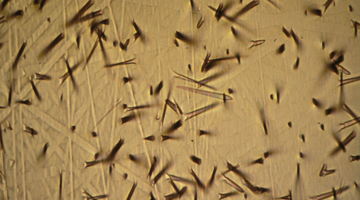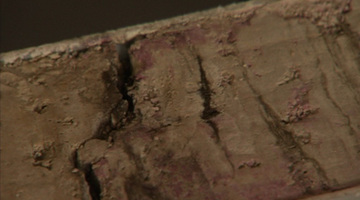Dr Fiona Petchey from the Waikato Radiocarbon Dating Unit based at the University of Waikato, explains what an isotope is. She then focuses on the isotopes of carbon and explains how the radioactive isotope carbon-14 is used in dating artefacts of historical importance. The half-life of carbon-14 is 5,730 years, and this can be used to date artefacts, particularly those related to human and cultural development over the past 60,000 years.
Point of interest: What is radioactivity?
Transcript
DR FIONA PETCHEY
An isotope is different forms of an element and each isotope has the same number of protons, it has a different number of neutrons in the nucleus of its atoms, and it has basically the same atomic number, but a different atomic mass.
And in the case of carbon, there are three different isotopes of carbon. There is carbon-12, carbon-13 and carbon-14. Carbon-12 has 6 protons and 6 neutrons in the nucleus. Carbon-13 has 7 neutrons, 6 protons in the nucleus, and carbon-14 has 8 neutrons.
C-14 is what we call a radioactive isotope. It’s unstable – it’s got 2 more neutrons in its nucleus, and it has to decay to get back to a more stable form. So C-14 is important for us because its half-life – that is, the time it takes for half the amount of it to decay away back into that stable form – is about 5,730 years. And that is very important for the time of humans – you know the human development and much of cultural development – because it enables us to date within the last 50 or 60 thousand years. Once you get back beyond 60,000 years, the amount of C-14 that is left after it has undergone these decays is so small that we can't detect it, so the limits of the technique are about 60,000 years.
As for how far into the present day we can date, anything that is under about 250 years old is affected by basically what humans have done to the atmosphere. We have put fossil fuels into the atmosphere through the industrial revolution, car fumes and so on, and that fossil fuel has a C-14 content to it, which affects our ability to measure C-14 within that 250-year frame.
However, within the last 50 years, atmospheric nuclear bomb testing has also put C-14 into the atmosphere. Because we have been able to measure it very carefully, precisely over the last 50 years, we can actually date things within the last 50 years within a year or so of it actually occurring, which is very useful for authenticating wines or dating drugs for instance. You can tell where the drugs have come from and what year they were grown and so you can have a better chance of tracking them down.
Acknowledgements:
Creative commons
Coast Guard News
Joey Zoolander
Festblues ~ / Nina
M.Breznai
Pierre Joliveau
Radiocarbon Dating Labaratory, University of Waikato
The University of Otago





